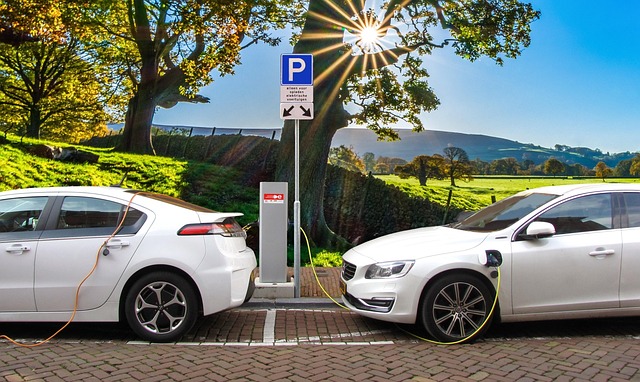Registering a car in California involves understanding specific requirements and gathering essential documents. This step-by-step guide walks you through the process, ensuring a smooth experience. From confirming your vehicle’s identity at the DMV for VIN verification to completing online or in-person registration and paying fees, each phase is clearly explained. By following these instructions, you’ll be legally registered and ready to hit the road in no time. Remember, proper dmv vin verification is key!
- Understand California Car Registration Requirements
- Gather Necessary Documents for Registration
- Visit Your Local DMV for Vehicle Identification Number (VIN) Verification
- Complete Online Registration or In-Person Transaction
- Pay Registration Fees and Receive Your Registration Papers
Understand California Car Registration Requirements

Before registering your car in California, it’s crucial to understand the state’s specific requirements. The California Department of Motor Vehicles (DMV) mandates that all vehicles operated within the state be properly registered and have passed a vehicle safety inspection. This process involves verifying the Vehicle Identification Number (VIN) to ensure the car’s authenticity and safety standards.
One key aspect is the VIN verification, often done through a process like mobile VIN inspection or direct DMV visits for more complex cases. These inspections are vital to checking the vehicle’s history, including any previous accidents or outstanding issues that could affect its registration. Understanding these requirements upfront ensures a smoother car registration experience in California.
Gather Necessary Documents for Registration

Before registering your car in California, you’ll need to gather several crucial documents. The first step is to ensure that your vehicle has passed all necessary inspections, including a dmv vin verification and emissions test if applicable. This process can often be simplified with a mobile vin inspection, making it more convenient for busy individuals or those who prefer a door-to-door service.
Among the essential documents you’ll require are your vehicle’s title, proof of insurance, and a valid driver’s license. It’s also important to have a complete vin inspection report, which includes detailed information about your car’s history and any potential issues. This documentation ensures a smooth registration process at the California Department of Motor Vehicles (DMV).
Visit Your Local DMV for Vehicle Identification Number (VIN) Verification

Before you can register your car in California, you’ll need to ensure that your vehicle meets all safety and emission standards. One crucial step in this process is visiting your local DMV for a Vehicle Identification Number (VIN) verification. This is a critical component of ensuring your car’s eligibility for registration. During your visit, the DMV will inspect your vehicle to confirm its VIN accuracy and completeness. Accurate VIN information is essential as it helps authorities trace the history of your car, including ownership changes, maintenance records, and any reported accidents or issues.
Many individuals opt for a mobile VIN verification service, which can be more convenient than visiting the DMV in person. These services use advanced technology to remotely check your vehicle’s VIN, offering a quick and often digital inspection process. A mobile vin verifier can help streamline the initial registration steps, saving you time and potential trips back and forth to the DMV. This alternative approach is especially beneficial for those with busy schedules or limited mobility, ensuring a smoother path to car registration in California.
Complete Online Registration or In-Person Transaction

In California, registering your car can be completed either online or in-person at a Department of Motor Vehicles (DMV) office. Both options offer unique advantages. For instance, completing the registration process online streamlines everything from the comfort of home, allowing you to upload necessary documents and have them quickly verified. This method is not only convenient but also saves time compared to visiting a DMV in-person. If you opt for an in-person transaction, expect a more detailed process where a DMV representative will guide you through each step and conduct a thorough VIN (Vehicle Identification Number) verification. This involves checking the vehicle’s history and ensuring its components are genuine, which is crucial for maintaining California’s strict safety and environmental standards.
For those considering a mobile vin verifier or conducting a vin inspection, it’s important to remember that DMV staff can also perform these checks as part of the registration process. The use of digital tools or third-party services might offer additional convenience, but direct interaction with the DMV ensures accuracy and cuts down on potential verification issues later in the registration journey.
Pay Registration Fees and Receive Your Registration Papers

After submitting your application for vehicle registration at the DMV, the next step is to pay the required fees. These fees vary depending on the type of vehicle and its age. You can typically pay online or in person at a DMV field office. Once your payment is processed, the DMV will conduct a DMV vin verification, which involves cross-referencing the Vehicle Identification Number (VIN) with their records to ensure the car’s history aligns with the information provided.
This process also includes receiving your registration papers, which are official documents confirming your vehicle’s registration status. These documents are usually sent by mail or can be printed out after payment if available online. Ensure you keep these papers in a safe place as they’re essential for future reference and may be required during vehicle sales or transfers.
Registering a car in California is a straightforward process that requires understanding the state’s requirements and gathering essential documents. After completing the necessary steps, including DMV VIN verification, you can opt for an online or in-person registration transaction. Ensure you pay all fees and receive your registration papers to legally operate your vehicle within the state.
